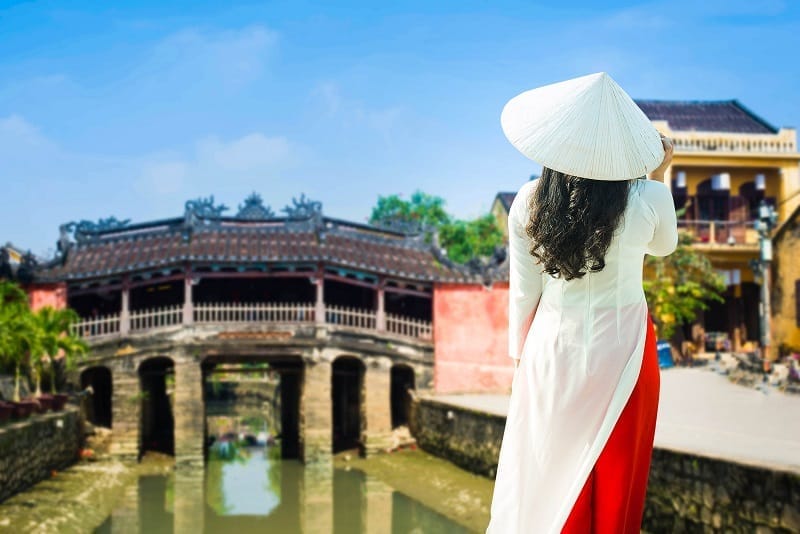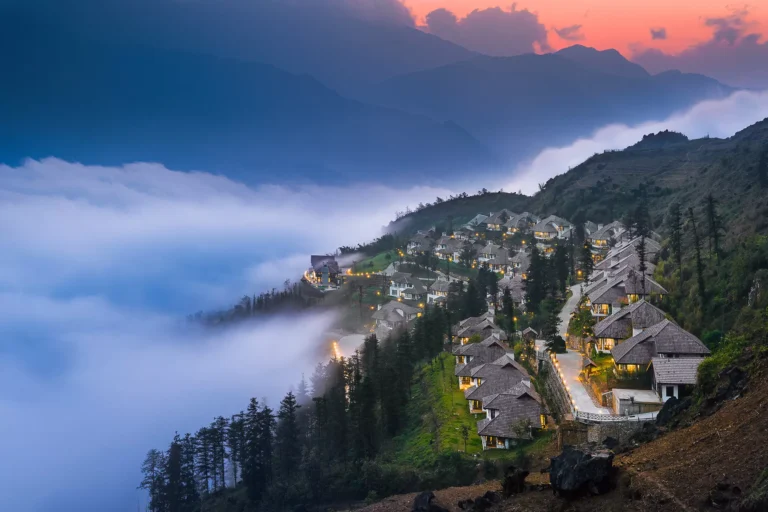
Best time to visit Sapa Vietnam: The ultimate guide for first-timers
Are you thinking about going to Sapa, but aren’t sure when would be the best time to visit Sapa? That is a component that can greatly affect your experience, so you should consider it. There are months with beautiful rice fields, months with a lot of rain, and months with freezing. Therefore, to ensure that you prepare adequately and know what to anticipate, you must be informed of Sapa’s weather before coming. Everything you need to know is below!
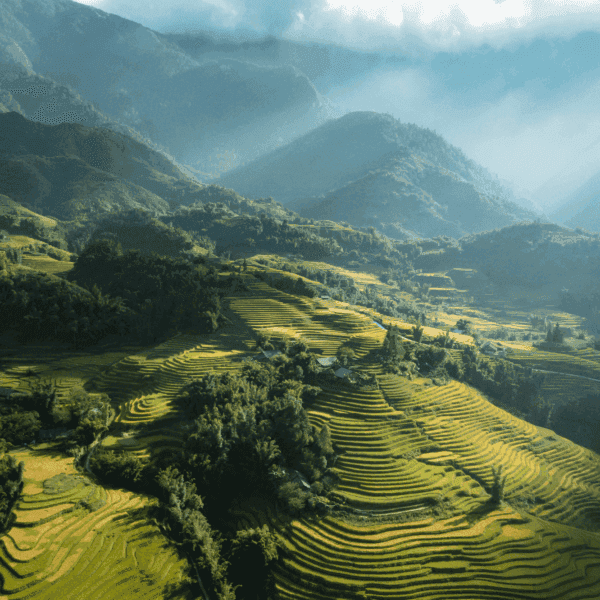
Sapa Vietnam
Brief information about Sapa’s weather
Sapa enjoys both temperate and subtropical weather due to its high altitude. You may experience all four seasons in one day if you stay in Sapa. Sapa experiences moderate morning temperatures, but by midday, the temperature rises sharply with a scorching sun. On the other hand, the sky is cloudy and misty in the late afternoon, and at night you can feel the chill of the mountain’s winter.
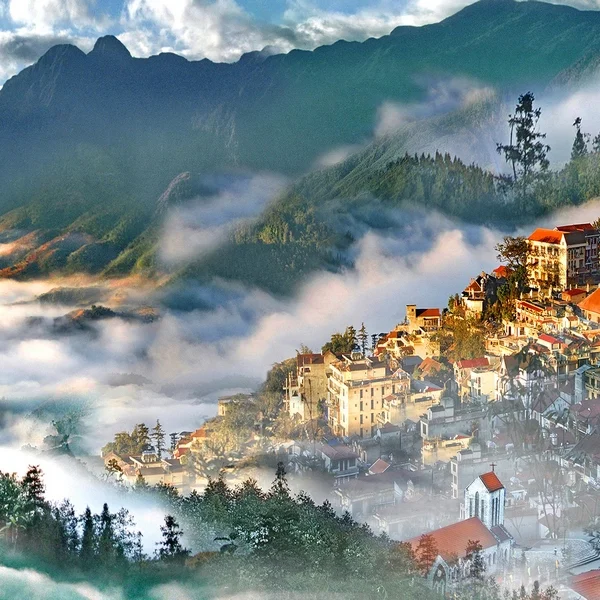
Sapa Vietnam
Sapa’s average temperature is around 15 degrees Celsius, influenced by the surrounding hilly terrain. The highest temperature recorded there in April is 33 degrees, while the lowest in January is zero.
- March through May: Pleasant, dry weather that is ideal for outdoor pursuits, including hiking
- High seasons for domestic travel and periods of severe precipitation occur from June to August.
- September to November: Cool, dry weather ideal for hiking and photography
- December through February: Winter’s harshness and the off-peak travel period
Sapa through each season
Because of its moderate temperature, Sapa offers unique attractions throughout the year. Together, we will investigate Sapa throughout the year to determine the best time to visit Sapa.
Spring in Sapa – From March to May
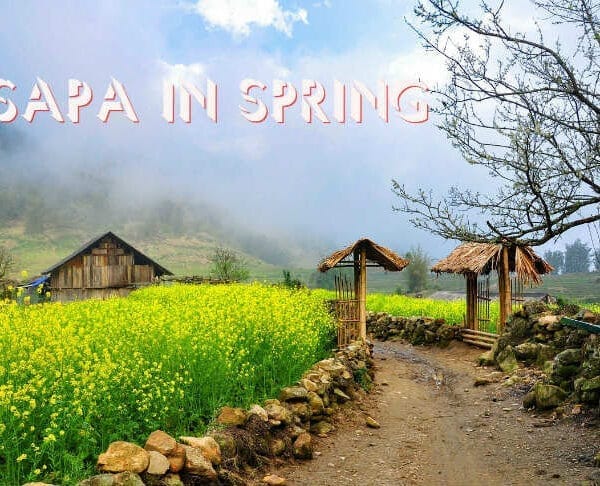
Spring in Sapa
Spring may be the best time to visit Sapa. The weather in Sapa becomes warmer and more pleasant after a harsh winter. This time of year, when you visit Sapa, you will have the opportunity to see blooming flowers everywhere you look – from the town’s road to the hillsides, valleys, and mountain slopes. Peach blossoms, azaleas, pure, delicate white plum blossoms, multicolored climbing roses, etc… are all worth seeing.
You may take in the vast terraced fields filled with green rice seedlings and workers working to cultivate rice from March to May. In Sapa at this time of year, these picture-perfect scenes are quite familiar. For those who enjoy hiking, trekking, mountain climbing, and exploring Fansipan Mountain, spring is a great season to visit Sapa because of the breathtaking highland scenery hidden under thick fog and the pleasant weather.

“Gau Tao” celebration
Also, at this season you can participate in a variety of distinctive ethnic minority festivities in Sapa. They include the “Gau Tao” celebration of the Hmong people and the “Rong Pooc” festival of the Giay people, among others. Every festival symbolizes a distinct traditional practice of the Sapa people. Additionally, the early spring marketplaces in Sapa, Can Cau Simacai, Bac Ha, and Coc Ly will undoubtedly provide you with unforgettable experiences.
During the spring season, guests may savor the H’mong traditional meal, Thắng Cố. A kind of Vietnamese soup called thắng cố is prepared using offal, horse flesh, and specific seasonings. The spring offers a strong link to the local culture and is the perfect season to enjoy thắng cố at traditional festivals or local markets. Grilled stream fish is another springtime treat that is made by grilling fresh stream fish over a charcoal fire while preserving their flavorful, natural state. The best time of year to eat this meal is in the spring when the water is clean and clear and there are plenty of fish.
Summer in Sapa – From June to August
The summer months of June, July, and August may be very hot. Furthermore, it can rain a lot practically every day. Nevertheless, an abundance of vegetation, such as rice terraces and fields reminiscent of the forest’s green hue, is brought about by the summertime. The waterfalls of Sapa are especially beautiful during and immediately after the rainy season because of the massive amounts of water that tumble down the hillsides. Trekking through the villages is a great way to take in the majesty of the limestone mountains, the untamed beauty of the forest, and the meandering streams that run beside the settlements. Thus, if you go in the summer, you may still enjoy the gorgeous surroundings.
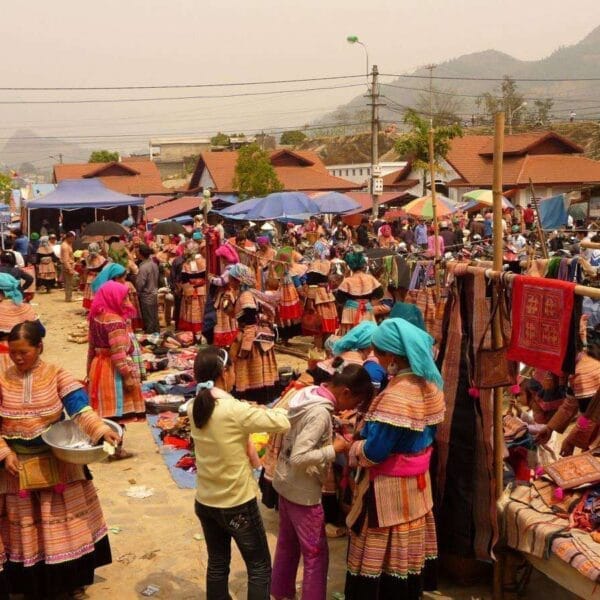
Sapa’s local markets
In addition to spring, summer is a great time to visit Sapa’s local markets. Among these are the markets at Bac Ha, Muong Hum, and Coc Ly. When you visit these marketplaces, you may purchase a wide range of goods, including brocade, chicken, cattle, etc. You will also have the opportunity to savor mouthwatering fresh fruits like peaches, red plums, purple plums, Chinese bayberries, etc. when you visit Sapa in the summer. Tasting fruits directly from the garden will be a memorable Sapa experience.
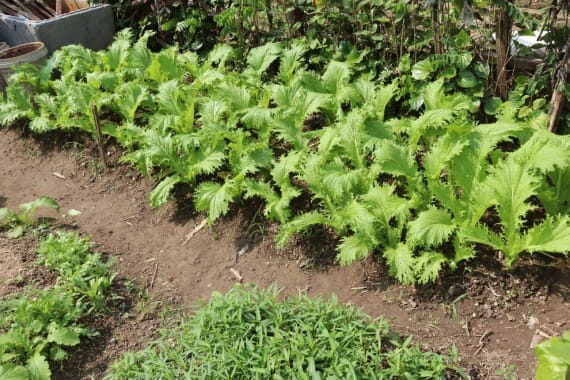
Cải Mèo
In Sapa, the summer months bring a variety of forest vegetables, including Rau Dớn and Cải Mèo. There are several methods to prepare these veggies, such as stir-frying them, adding them to soups, or combining them with salads. Summertime brings an abundance of woodland veggies, which provide a nutritious and fresh dinner alternative. Grilled Suckling Pig is another summertime classic. The meat of these organically grown suckling piglets is firm and tasty, and it’s usually roasted or grilled whole. Locals frequently host outdoor BBQ parties with this delectable cuisine during the summer, which enhances the joyous and sociable ambiance.
Autumn in Sapa – From September to November
September through November is considered to be the ideal time of year to visit Sapa, Vietnam’s autumn season. September provides less rain, which facilitates simpler and more pleasurable trekking and touring. Even if it’s still rather warm during the day, the summer heat ultimately departs.
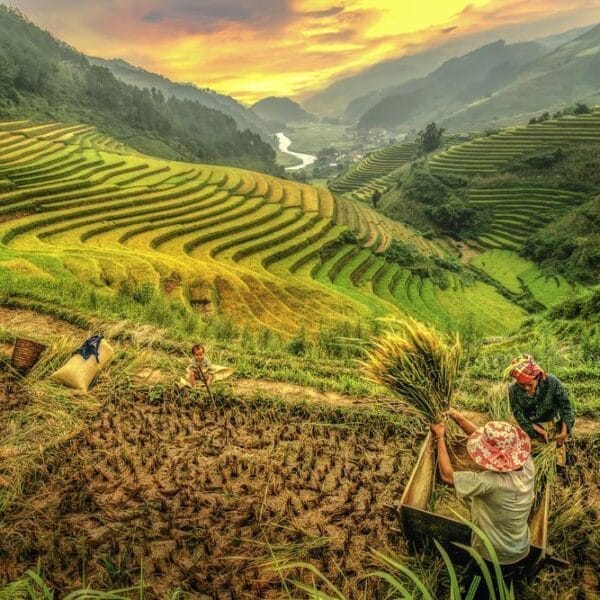
Autumn in Sapa
September and October fall in the same month as the harvest season. Sapa’s rice fields are especially gorgeous this time of year. With golden rice fields snaking like golden ribbons over the mountains, the scene is breathtaking. Fall is therefore the ideal season to visit Sapa. Let’s explore Sapa’s amazing fall foliage!
Golden rice fields in full bloom
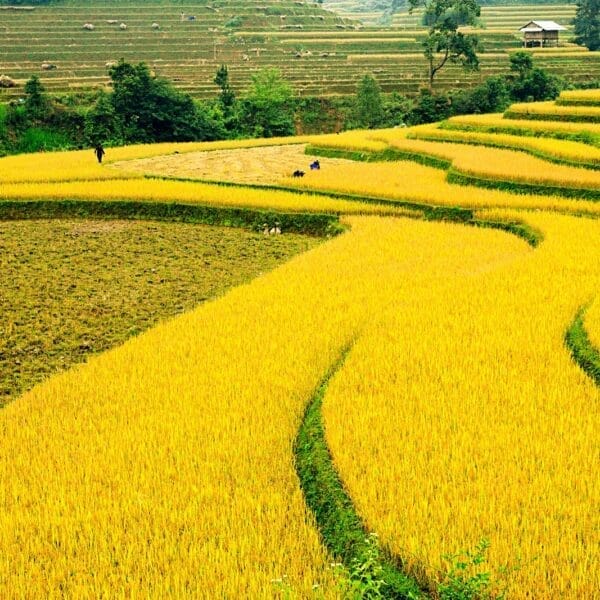
Golden rice fields in full bloom
One of the well-known locations to see the rich golden terrace rice fields is Sapa. As you hike past the settlement, you will come across beautiful mountains around yellow fields. The greatest villages to witness the mature golden terrace fields and farmers harvesting after a laborious plowing process are Ta Van, Lao Chai, Ban Den, and Ta Phin.
Morning dew
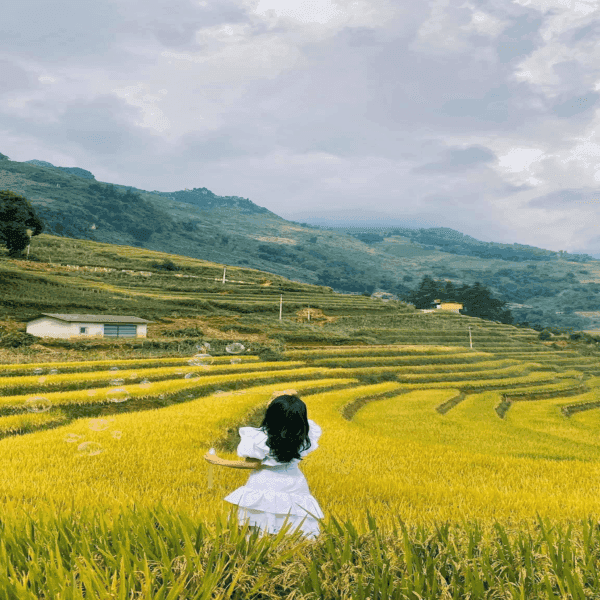
Morning dew
Sapa is coated with morning dew, which turns the landscape serene and shimmering in the early morning light. One of the finest ways to experience Sapa’s beautiful lifestyle is to go for a stroll beneath the first frost of autumn and take in the breathtaking surroundings.
Exciting Then ritual
Autumn can also be the best time to visit Sapa. One of Sapa’s most important rituals is the Then ritual, which is performed every August according to the lunar calendar. The people of Sapa celebrate it to give thanks to their ancestors, pray for good weather, ask for a bountiful crop, and conclude a year of productivity. This time, when you visit Sapa, you will have the opportunity to fully experience the bustling native environment.
Cơm Lam, a classic delicacy composed of sticky rice poured into bamboo tubes and barbecued over a grill, is best enjoyed in the fall. Cơm lam is frequently served in autumn during harvest festivals and other special occasions, signifying the abundance of the time of year. Sapa Shiitake Mushrooms are a naturally occurring fall delicacy that thrives in the woods. You may prepare these fresh mushrooms in soups, broths, or stir-fries, among other recipes. The finest time to savor the deep flavor of shiitake mushrooms is in the autumn when harvesting is at its optimum in Sapa.
Read more: Info to enter Vietnam
Winter in Sapa – From December to February
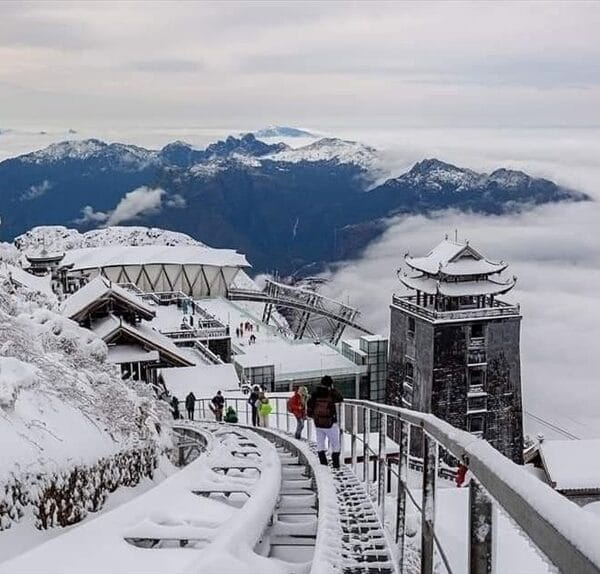
Winter in Sapa
Winter lasts from November to the end of February. The dense fog that comes with winter is the reason for the clouds that cover the mountains. It can provide some quite beautiful vistas, but it can also block your view of the unique surroundings. Beginning in February, the weather gradually improves and the temperature increases a little.
Although the coldest months of the year are January and December, November is still a great time of year to visit Sapa. This time of year is capable of snowfall and below-freezing temperatures. Because of the chilly weather and empty rice fields, it is not the best time of year to hike Sapa. Don’t forget to pack appropriate attire if you intend to go trekking. It may be quite chilly, so bear in mind that not all homestays in Sapa, particularly the more budget-friendly ones, have enough warmth.
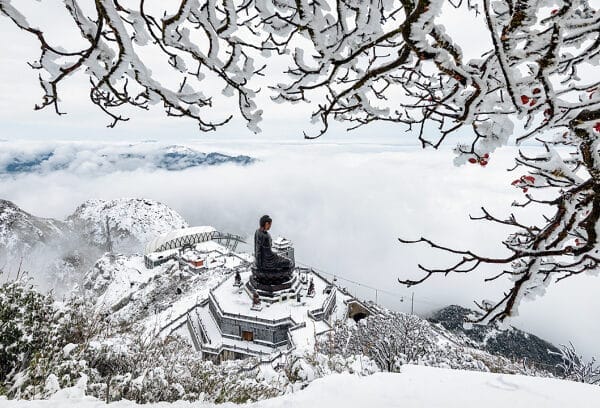
Winter in Sapa
When visiting Sapa in the winter, be sure to see places like Sapa Stone Church, Fansipan Mountain, Cat Cat Village, and Ham Rong Mountain. These locations are quite attractive in the winter, particularly when it snows. You can still keep up with Sapa’s lively pace of life despite the freezing weather. Numerous booths offering brocade, shoes, trinkets, and other items are present. You will also notice the Dao woman with a red scarf on her head and the White H’mong woman wearing a basket on her back and beautiful patterned clothing.
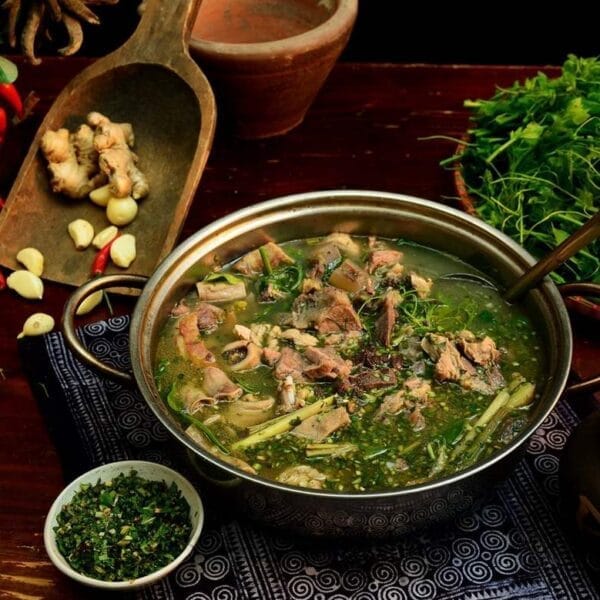
Thắng Cố Hotpot
Winter in Sapa calls for warm and nutritious dishes like Thắng Cố Hotpot. This dish is made from horse meat and offal, combined with various spices, providing warmth and energy during the cold months. Winter is the perfect time to enjoy Thắng Cố Hotpot, especially in the chilly mountain climate. Another winter specialty is Five-Color Sticky Rice, a traditional dish of the Tay people. Made from glutinous rice dyed with natural colors from leaves, this dish symbolizes luck and reunion. In winter, five-color sticky rice is often prepared during Tet holidays and important events, adding a festive and colorful touch to the season.
What is the Best time to visit Sapa Vietnam?
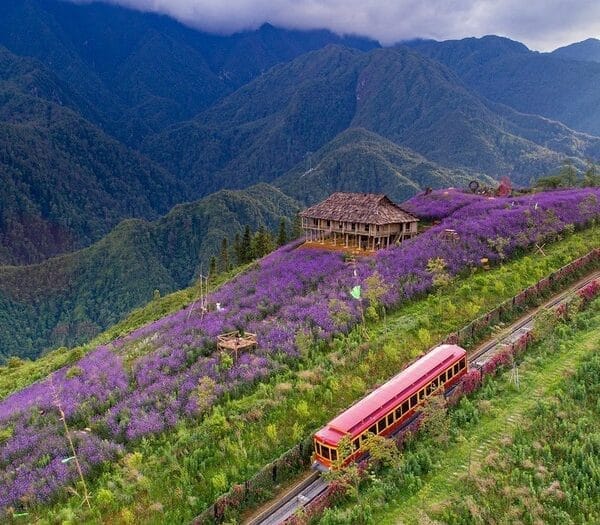
best time to visit Sapa
Coming to Sapa in different seasons, tourists will enjoy different specialties and participate in seeing Sapa in different scenery. No matter what season it is, when coming here, visitors will have a memorable and happy time. However, autumn (September to November) is the finest season, the best time to visit Sapa because of the perfect weather and the breathtaking golden rice terraces. Spring (March to May) is another great season with pleasant temperatures and blossoming flowers. In Sapa, every season has its own distinct appeal, bringing with it a variety of activities and breathtaking scenery.
If you still want to know the best time to visit Sapa. Below is your answer: Autumn is usually the ideal season to visit Sapa, Vietnam, for the most favorable weather and scenic vistas. Autumn is the best time to visit Sapa for a tranquil and enlightening trip since the greenery is lusher, the wildlife is more plentiful, and the area is less congested than in the summer.
Autumn also marks the beginning of harvest season, which provides chances to engage in regional agriculture and distinctive cultural experiences. In addition, there are several festivals and cultural events that let tourists fully experience Sapa’s colorful customs. Participating in customary celebrations such as the New Rice Festival and the Buckwheat Flower Festival offers a distinctive cultural encounter. The Hmong and Dao people celebrate the New Rice Festival in the fall as a way to give thanks to the gods for a plentiful crop. The customs, singing, and dancing that go along with the celebrations are open to visitors. At the late-autumn Buckwheat Flower Festival, attendees may take part in customary cultural events and enjoy the beauty of the blooming buckwheat flowers. These joyful celebrations offer a profound cultural immersion.
What is the best time to Visit Sapa Vietnam? Vietnam Allure Travel’s ultimate guide for first-time visitors

Greetings from Vietnam Allure Travel, your go-to company for discovering Sapa’s magnificent scenery. The goal of our comprehensive first-time visitor guide is to assist you in determining the ideal time to visit this captivating location. Every season is different in Sapa, which is well-known for its terraced rice fields, lively local culture, and breathtaking mountain views.
Autumn is the best time to visit Sapa because of its abundant natural beauty as well as its varied and rich cultural offerings. Immersion in local everyday life, participation in customary practices, and a greater comprehension of this intriguing region’s distinct cultural history are all available to visitors. An autumnal trip to Sapa is genuinely unique because of all the deep connections that may be made with the local culture with each activity. Put your trust in Vietnam Allure Travel to provide you with a once-in-a-lifetime trip to one of the most fascinating areas of the country.
Contact us now to start your journey!
Phone: +84 979133907
Mail: booking@vietnamalluretravel.com
Address: 16 Lane 268/2, Ngoc Thuy, Hanoi, VN
Woking hours: 8.00 am – 18.00 pm
Recent Posts
Halong Bay overnight cruise: A journey of serenity and wonder
The history of Tanah Lot Temple: A unique and fascinating tale
Tanah Lot Temple Best time to visit
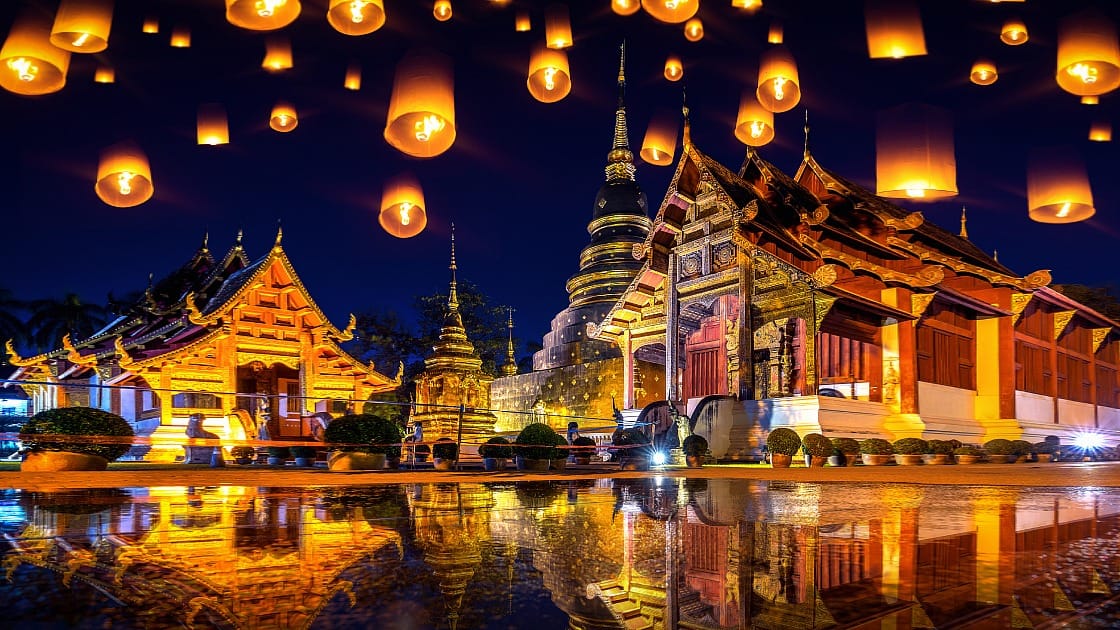
Thailand
